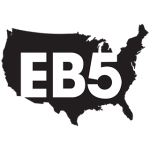
For many families around the world, providing the best educational opportunities to their children is a top priority. The EB-5 Immigrant Investor Program offers a unique pathway to achieve this goal while securing permanent residency in the United States. This article explores how the EB-5 program can benefit investors’ children in the U.S. education system, from elementary school through university and beyond.
The EB-5 Program: An Overview
Benefits for Children’s Education
EB-5 vs. F-1 Visa: Comparing Educational Pathways
Planning for the Future
The EB-5 Program: An Overview
The EB-5 program, established by Congress in 1990, allows foreign investors to obtain U.S. permanent residency by investing in a new commercial enterprise (NCE) that creates jobs for U.S. workers. The current investment threshold is $800,000 for projects in targeted employment areas (TEAs) or $1,050,000 for projects outside TEAs. Successful applicants and their immediate family members receive conditional permanent residency, which can be converted to unconditional permanent residency after two years.
Benefits for Children’s Education
One of the primary motivations for many EB-5 investors is to secure better educational opportunities for their children. The program offers several advantages in this regard:
- Access to the U.S. public education system.
- In-state tuition rates at public universities.
- Eligibility for scholarships and financial aid.
- Easier admission process for U.S. colleges and universities.
- Opportunities for internships and post-graduation employment.
K-12 Education Opportunities
Children of EB-5 investors gain immediate access to the U.S. public school system upon receiving conditional permanent residency. This allows them to:
- Attend high-quality public schools for free.
- Immerse themselves in American culture and improve English language skills.
- Participate in extracurricular activities and sports programs.
- Build a strong academic foundation for college applications.
Higher Education Advantages
The EB-5 program provides significant benefits for investors’ children pursuing higher education in the United States. These include:
Admission Process
U.S. permanent residents are typically considered domestic applicants in the college admission process. This can be advantageous because:
- Many universities have higher acceptance rates for domestic applicants.
- Permanent residents are not subject to international student quotas.
- English language proficiency tests (like TOEFL or IELTS) may be waived.
Tuition and Financial Aid
As permanent residents, EB-5 investors’ children may qualify for:
- In-state tuition rates at public universities, much lower than international or out-of-state student rates.
- Federal financial aid, including grants and low-interest loans.
- A wider range of scholarship opportunities, including those restricted to U.S. citizens and permanent residents.
EB-5 vs. F-1 Visa: Comparing Educational Pathways
When considering options for studying in the United States, many international families weigh the benefits of the EB-5 program against the more traditional F-1 student visa. Both pathways offer unique advantages and challenges for students pursuing education in the United States. When deciding between EB-5 and F-1, families should consider:
- Long-Term Prospects: EB-5 provides a clear path to permanent residency and eventual citizenship, while F-1 is temporary and may require transitioning to other visas for long-term stay.
- Financial Implications: EB-5 requires a significant upfront investment but can lead to long-term savings on education costs. F-1 doesn’t require an investment but often means paying higher tuition rates.
- Employment Opportunities: EB-5 students have much more flexible work rights, enhancing internship and job prospects. F-1 students face limitations on off-campus employment.
- Flexibility: EB-5 status allows students to change majors, transfer schools, or take breaks from study without immigration consequences. F-1 students must maintain continuous enrollment and follow strict guidelines.
Financial Considerations
While the EB-5 program requires a substantial upfront investment, it can lead to significant long-term savings on education costs.
Investors should carefully compare the total cost of the EB-5 investment with potential savings over time, especially if they have multiple children who plan to study in the U.S.
Long-Term Career Prospects
Beyond education, the EB-5 program offers several advantages for children’s future careers:
- Permanent residents can work for any employer without sponsorship, providing greater job flexibility and negotiating power.
- They have access to a wider range of job opportunities, including those in government and sensitive industries.
- The path to U.S. citizenship is clear, with naturalization possible after five years of permanent residency.
These factors can significantly enhance long-term career prospects and earning potential.
Planning for the Future
For families considering the EB-5 program as a means to secure their children’s educational future, it’s essential to start planning early. Here are some key steps:
- Research EB-5 projects and regional centers thoroughly.
- Consult with experienced immigration attorneys and financial advisors.
- Consider the timing of the application in relation to children’s ages and educational goals.
- Explore target schools and universities to understand admission requirements and costs.
- Develop a long-term financial plan that accounts for both the EB-5 investment and future expenses.
By taking a proactive approach, families can maximize the educational benefits of the EB-5 program and set their children on a path to success in the United States.
If you’re interested in learning more about how the EB-5 program can benefit your family’s future in the U.S., book a free one-on-one call with our expert team today.
